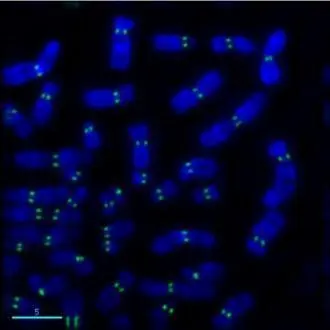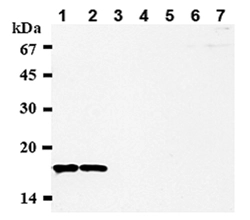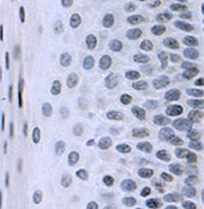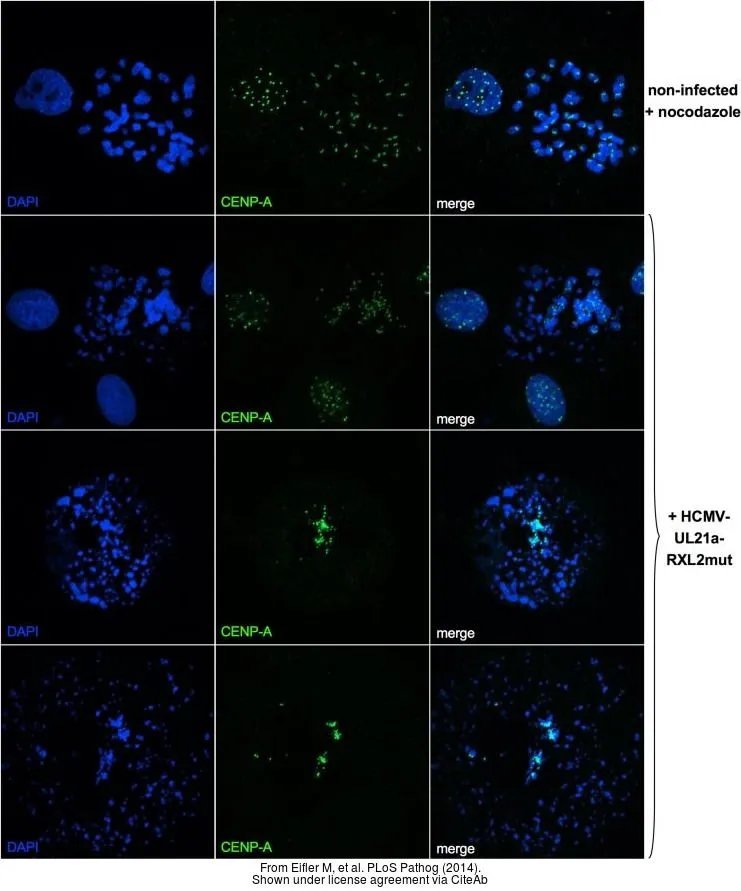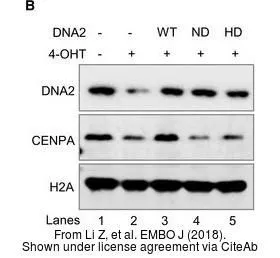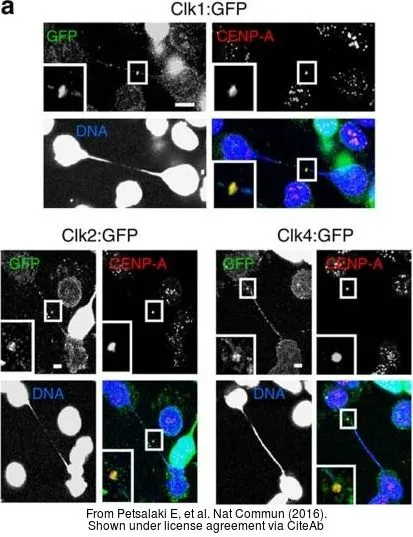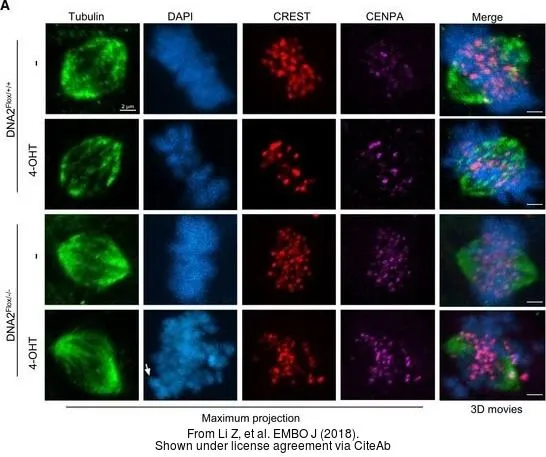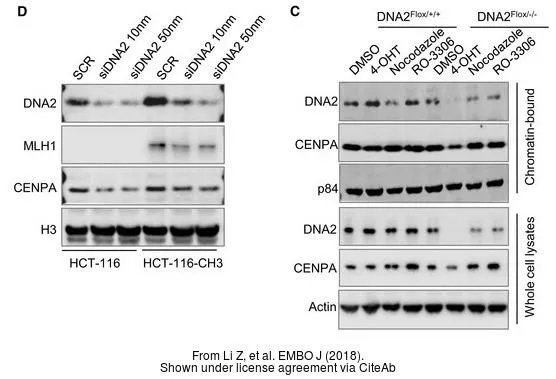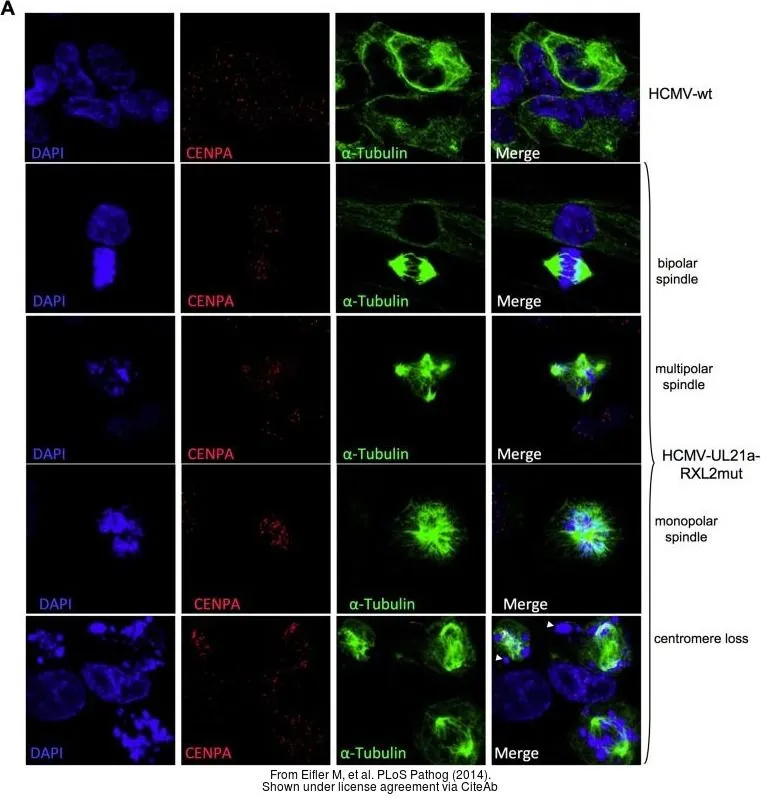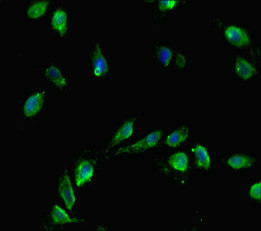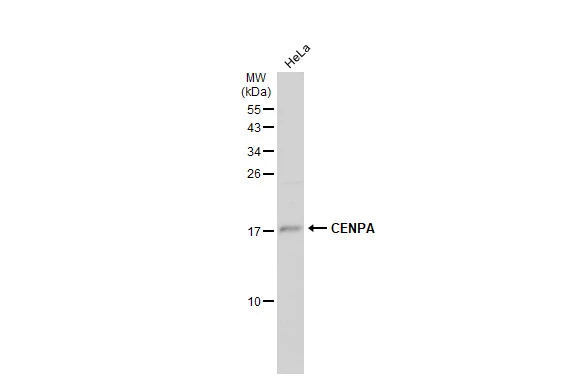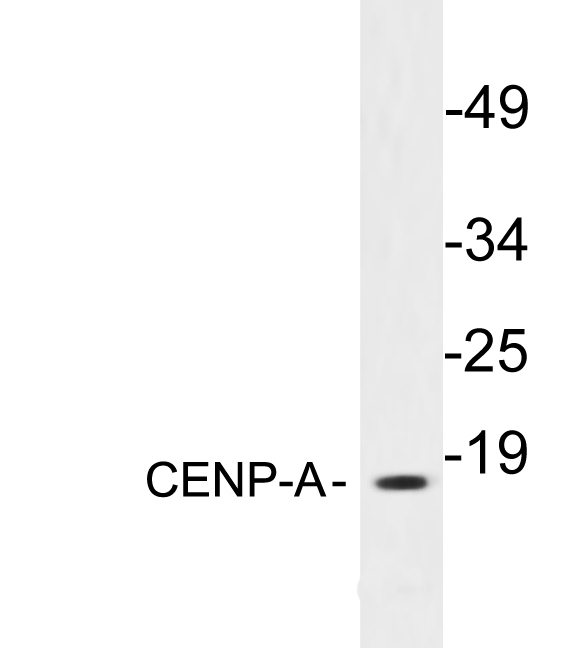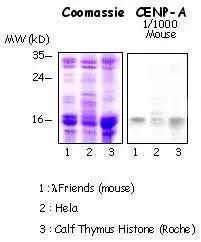
Hela cells (human), Friend cells (mouse) and calf thymus (Roche). 5 g acid-extracted histones were loaded per lane. Images taken following 5 min exposure. 1:1000 dilution. Lane 1: Friend cells (mouse); Lane 2: Hela cells (human); Lane 3: Calf thymus. This
CENPA antibody [3-19]
GTX13939
ApplicationsImmunoFluorescence, Western Blot, ChIP Chromatin ImmunoPrecipitation, ImmunoCytoChemistry, ImmunoHistoChemistry, ImmunoHistoChemistry Paraffin, Neutralisation/Blocking
Product group Antibodies
ReactivityC. Elegans, Chicken, Human
TargetCENPA
Overview
- SupplierGeneTex
- Product NameCENPA antibody [3-19]
- Delivery Days Customer9
- Application Supplier NoteICC: Use at a concentration of 10 microg/ml. IHC: Use at a concentration of 5 microg/ml. For paraffin embedded sections, heat treatment may be necessary. Microwave sections 2 times for 10 minutes each in citrate buffer (pH 6.5). WB: Use at a concentration of 1 microg/ml. Detects a band of approximately 18 kDa (predicted molecular weight: 16 kDa). Optimal dilutions/concentrations should be determined by the end user. User review: This antibody is great for immunofluorescence on human cells (primary fibroblasts and transformed cell lines such as HeLa, HT1080, A549, H1299). Works well with various fixation conditions, including 1-4% paraformaldehyde (PFA), -20C methanol, 2% PFA followed by -20C methanol, and on unfixed preparations. We routinely use it at a dilution of 1:200-1:400.
- ApplicationsImmunoFluorescence, Western Blot, ChIP Chromatin ImmunoPrecipitation, ImmunoCytoChemistry, ImmunoHistoChemistry, ImmunoHistoChemistry Paraffin, Neutralisation/Blocking
- CertificationResearch Use Only
- ClonalityMonoclonal
- Clone ID3-19
- Concentration1 mg/ml
- ConjugateUnconjugated
- Gene ID1058
- Target nameCENPA
- Target descriptioncentromere protein A
- Target synonymsCENP-A, CenH3, histone H3-like centromeric protein A, centromere autoantigen A, centromere protein A, 17kDa, centromere-specific histone
- HostMouse
- IsotypeIgG1
- Protein IDP49450
- Protein NameHistone H3-like centromeric protein A
- Scientific DescriptionCentromeres are the differentiated chromosomal domains that specify the mitotic behavior of chromosomes. This gene encodes a centromere protein which contains a histone H3 related histone fold domain that is required for targeting to the centromere. Centromere protein A is proposed to be a component of a modified nucleosome or nucleosome-like structure in which it replaces 1 or both copies of conventional histone H3 in the (H3-H4)2 tetrameric core of the nucleosome particle. The protein is a replication-independent histone that is a member of the histone H3 family. Alternative splicing results in multiple transcript variants encoding distinct isoforms. [provided by RefSeq, Nov 2015]
- ReactivityC. Elegans, Chicken, Human
- Storage Instruction-20°C or -80°C,2°C to 8°C
- UNSPSC12352203
References
- Wu F, Akbar H, Wang C, et al. Sgo1 interacts with CENP-A to guide accurate chromosome segregation in mitosis. J Mol Cell Biol. 2024,15(10). doi: 10.1093/jmcb/mjad061Read this paper
- Sobajima T, Kowalczyk KM, Skylakakis S, et al. PP6 regulation of Aurora A-TPX2 limits NDC80 phosphorylation and mitotic spindle size. J Cell Biol. 2023,222(5). doi: 10.1083/jcb.202205117Read this paper
- Radhakrishnan RM, Kizhakkeduth ST, Nair VM, et al. Kinetochore-microtubule attachment in human cells is regulated by the interaction of a conserved motif of Ska1 with EB1. J Biol Chem. 2023,299(2):102853. doi: 10.1016/j.jbc.2022.102853Read this paper
- Dacus D, Stancic S, Pollina SR, et al. Beta Human Papillomavirus 8 E6 Induces Micronucleus Formation and Promotes Chromothripsis. J Virol. 2022,96(19):e0101522. doi: 10.1128/jvi.01015-22Read this paper
- Pesenti ME, Raisch T, Conti D, et al. Structure of the human inner kinetochore CCAN complex and its significance for human centromere organization. Mol Cell. 2022,82(11):2113-2131.e8. doi: 10.1016/j.molcel.2022.04.027Read this paper
- Jia Y, Zhou J, Tan TK, et al. Super Enhancer-Mediated Upregulation of HJURP Promotes Growth and Survival of t(4;14)-Positive Multiple Myeloma. Cancer Res. 2022,82(3):406-418. doi: 10.1158/0008-5472.CAN-21-0921Read this paper
- Mammel AE, Huang HZ, Gunn AL, et al. Chromosome length and gene density contribute to micronuclear membrane stability. Life Sci Alliance. 2022,5(2). doi: 10.26508/lsa.202101210Read this paper
- Chen A, Wen S, Liu F, et al. CRISPR/Cas9 screening identifies a kinetochore-microtubule dependent mechanism for Aurora-A inhibitor resistance in breast cancer. Cancer Commun (Lond). 2021,41(2):121-139. doi: 10.1002/cac2.12125Read this paper
- Pesenti ME, Prumbaum D, Auckland P, et al. Reconstitution of a 26-Subunit Human Kinetochore Reveals Cooperative Microtubule Binding by CENP-OPQUR and NDC80. Mol Cell. 2018,71(6):923-939.e10. doi: 10.1016/j.molcel.2018.07.038Read this paper
- Petsalaki E, Dandoulaki M, Zachos G. Chmp4c is required for stable kinetochore-microtubule attachments. Chromosoma. 2018,127(4):461-473. doi: 10.1007/s00412-018-0675-8Read this paper

